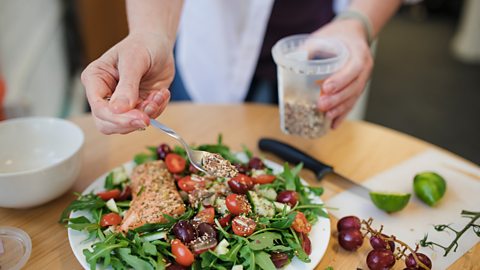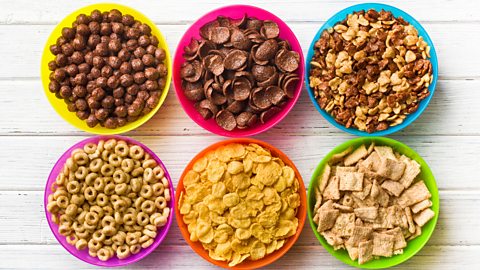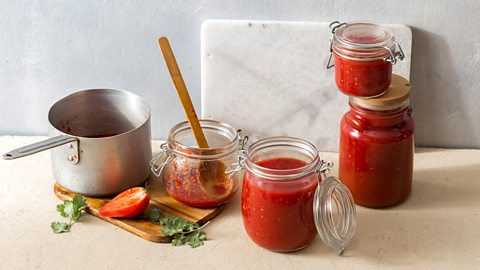Why some foods have the same carbon footprint as 5 miles in an SUV
Food production is responsible for about a quarter of the world’s greenhouse gas emissions, but some foods are much larger contributors than others. “The most important considerations when shopping for food are avoiding airfreight, buying in season and making your diet as plant-based as possible”, writes Mike Berners-Lee in his book How Bad are Bananas?: The Carbon Footprint of Everything. Why do these factors have such a big impact, and how can you can reduce your carbon ‘food’print?

The carbon cost of airfreighting food
Globally, transport emissions account for just six percent of food’s carbon footprint on average. But “when 1kg of produce is moved, a mile by air typically has around 100 times the carbon impact of a mile by sea”, according to Berners-Lee.
Food labels don’t usually include information about transport. But if you’re buying highly perishable foods, such as asparagus, green beans, mangetout, shelled peas, baby corn or berries, out of season, it’s worth checking if they’re from far away. If so, “ask yourself whether they are robust and thick-skinned enough to go on a boat, or whether they will have had to be flown”, advises Berners-Lee. Alternatively they may have been hothoused locally, but this can also come with a high carbon footprint.
Although airfreight is responsible for less than one percent of total UK food miles, it produces 11 percent of the carbon dioxide emissions from UK food transport, according to SOAS University of London. In fact, “avoiding foods that have been airfreighted [could] knock 20 percent off [the carbon footprint of] any diet”, writes Berners-Lee.
Driving five miles in an SUV would emit about 6.3kg CO2 equivalent, roughly the same as 350g asparagus airfreighted to the UK from Peru. If the asparagus were grown locally in the UK in season, the CO2 equivalent would be about 378g*. Discover more about airfreighted food in our 90-second animation.
The carbon cost of hothousing food
Fruit and veg bought out of season may have been grown in a heated greenhouse (hothouse), imported from a country where it is in season, or refrigerated to prolong shelf-life. Highly perishable produce, including tomatoes and strawberries, are sometimes grown in hothouses. You can reduce your carbon footprint by only eating them in season or choosing preserved produce, for instance frozen on canned, instead. Some hothouses use renewable energy sources, reducing their carbon footprint.
250g organic vine cherry tomatoes grown in a fossil-fuel heated greenhouse in the UK in March has a slightly higher CO2 equivalent (7kg) than driving five miles in an SUV – you could eat 4.8kg of UK seasonally grown salad tomatoes for the same carbon cost*. Find out more about the carbon cost of hothousing food in our short animation.
The carbon cost of beef
The average farm animal converts 10 percent of the calories it eats into meat and dairy, according to Berners-Lee. If animals are fed crops that could be eaten directly by humans, this is much less efficient than eating the plants ourselves.
But the carbon emissions of meat can vary depending on where and how it has been reared. Imported beef, especially from somewhere like Brazil, where cattle ranching is the main driver of deforestation both for keeping cattle and for producing soya to feed them, can have about three times the carbon footprint of British beef.
Most beef sold in the UK is farmed here (this information is usually on the packaging), and the majority of the carbon footprint comes from the farming itself. Grass-feeding cattle is common in Britain, although it is often supplemented in the winter, and much British grazing land is unsuitable for growing crops.
Berners-Lee estimates an 8oz raw steak from the UK generates 5.8kg CO2 equivalent, just a bit less than driving five miles in an SUV. But the same weight of raw steak from deforested land in Brazil can generate 17.8kg, the same as driving your SUV 14 miles, buying a new pair of leather shoes (15kg CO2 equivalent) or leaving a light on for a fortnight (11.5kg CO2 equivalent for a 100-watt incandescent bulb).
The carbon cost of producing food
It’s also worth considering how much production and refrigeration a product requires. For example, oranges keep well and can be shipped rather than flown, so their carbon footprint is usually fairly low. But a litre of fresh orange juice can have a CO2 equivalent (5.76kg) of just over 6kg oranges – many more than it takes to make the juice. The reasons for this include waste of the pulp, manufacturing requirements such as pasteurising the juice and making the carton, transporting it from farm to juicer to cartoner to distributor, and refrigeration.
- Unless stated otherwise, the CO2 equivalent data in this article is from How Bad Are Bananas?: The Carbon Footprint of Everything by Mike Berners-Lee, published by Profile Books. It is based on Small World’s Food carbon models. “Carbon footprinting is a long way from being an exact process,” said Berners-Lee. “All my numbers are best estimates and nothing more, even though I have reached them as carefully and rigorously as possible”, he states. Carbon footprints are measured in this article in CO2 equivalent, short for carbon dioxide equivalent. “This is simply a way of describing an object or action’s overall contribution to global warming, taking into account CO2 as well as other greenhouse gases such as methane and nitrous oxide”, writes Berners-Lee.



